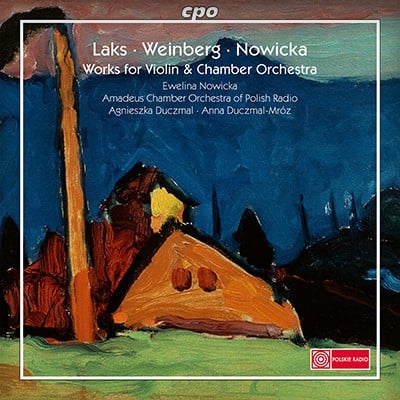Bote & Bock
The Symphony for String Orchestra from 1964 numbers among the main works of Laks’s second creative period between 1960 and 1967. It was premiered on May 15, 1966, at the Dzialynski Palace in Poznan by the Poznan Chamber Orchestra under the direction of Robert Satanowski. With its dark colours, austere severity of the harmony and rhythmic rigour, it is the contrasting counterpart to Laks’s ironic-carefree Sinfonietta for Strings, composed in 1936. Neoclassical here is only the formal structure: a four-movement symphony with a weighty opening movement in sonata form, a slow second movement, a scherzo and a finale. The tonal language echoes Bartók in its linearity and extreme chromaticism. On the rhythmic level, we sense the same fascinating elan vital, which is so characteristic of the music of Polish composers of this generation (Panufnik, Tansman, Spisak, Szalowski, and others). The passionate heart of the work is undoubtedly the second movement, a passacaglia that alone through its sheer dimensions make it the centre of gravity — it takes up a third of the total duration of the symphony. As a form, the passacaglia (French: chaconne) plays a central role in Laks’s works, and its extra-musical connotation is obvious: it is based on his eerie anti-war melodrama Le Général from the late 1930s, and he uses it again in one of his first postwar compositions, the Vocalise Passacaille for voice and piano, a poignant requiem without words in miniature format. Mieczyslaw Jastrun’s 1967 poem Pogrzeb (“The Farewell”), the only text in Laks’s song repertoire that makes specific reference to the hell of Auschwitz, is set to music as a passacaglia. The fateful relentlessness invoked in the repetition of the ever-same bass theme is a musical topos that reached a paradigmatic formulation in two of the genre’s early major works: Purcell’s G-minor Chacony for strings and Bach’s D-minor Chaconne for solo violin. At the high point of his opera The Passenger, Weinberg has the latter played by the Jewish prisoner Tadeusz before the assembled concentration camp authorities as an act of resistance, instead of the waltz requested by the commandant, resulting in his immediate execution. Laks, a master of understatement and discretion (in his life as in his musical works), inscribes in the second movement of his symphony this stretto of civilisational masterpiece and absolute barbarism by means of two motif citations: the B A C H theme “finds” itself in the melodic development above the fundamental bass as do the initial notes (f e f d) of the “Dies irae”, as if he were composing a commentary on Celan’s Death is a Master from Germany. In the structure of the eight-bar passacaglia theme, Laks’s effort to reconcile the ultra-chromaticism of dodecaphony with the ear’s need for “tonal” orientation becomes clear. All twelve notes of the chromatic scale are found within a brief space, however these are grouped into motivic cells, which in themselves, through the dominance of thirds, fourths and ascending and descending leading tones, creates an energetic interplay of tension and relaxation, characteristic of tonal music in the broadest sense. The enormous inner tension, which results from the permanent ambivalence of the intervallic references in the polyphonic texture, is resolved only at the end of the last movement in a pure, almost painfully radiant C major chord.
Frank Harders-Wuthenow

Amadeus Chamber Orchestra of Polish Radio / Anna Duczmal-Mróz
cpo 555 523-2
